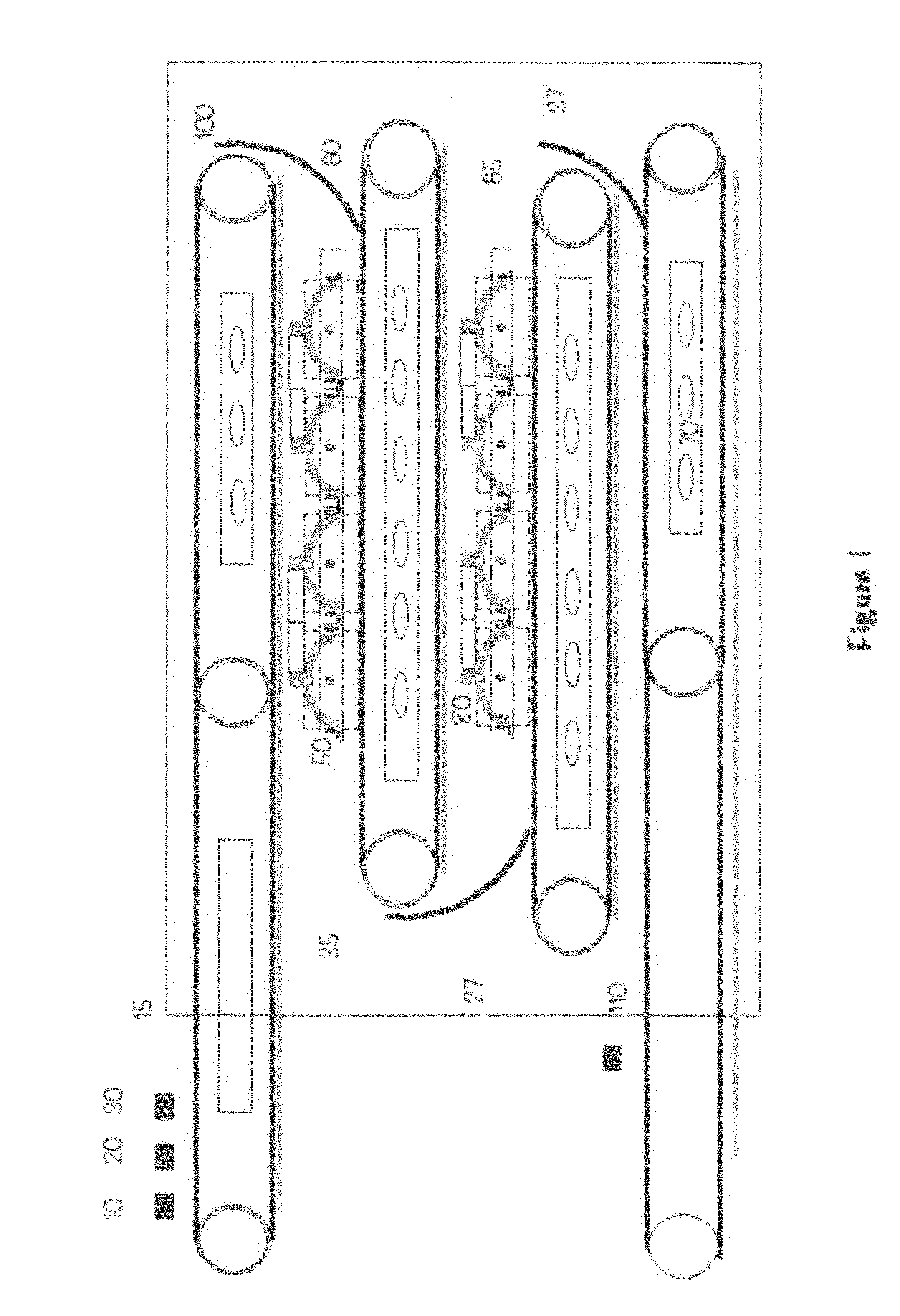Novel approach to the controlled decontamination and or detoxification of nuts, grains, fruits and vegetables
- Summary
- Abstract
- Description
- Claims
- Application Information
AI Technical Summary
Benefits of technology
Problems solved by technology
Method used
Image
Examples
example one
Decontamination of Commercial Almonds:
[0095](This example uses the surface steaming methodology combined with shortwave UV and product acidification).
[0096]Commercial almonds, variety Non-Pareil, pass into the manufacturing environment at a throughput rate of 2000 lbs / hour. They are exposed to 3 separate but continuous rinse stages. Stages 1(10) and 2(20) consist of conventional product spray cleaning heads, each at a pressure of 15-60 lbs / in2 and a volume of between 5-20 gallons / hour. Potable water, with / without chlorination and / or food approved surfactants, is sprayed on the passing product in stages 1 and 2. If the product is fed along a linear conveyor (15, 25), there is a fall in the conveyor (17,27) of between 3″-6″ approximately halfway through each washing stage to ensure all product surfaces are equally treated. If product is gently rotary tumbled or cascaded through the rinse systems, then an even wash / rinse is naturally achieved. The 3rd rinse stage (30) is a repeat of st...
example two
Detoxification of Commercial Almonds:
[0106]The removal of Alflatoxins primarily requires medium and longwave Ultraviolet light rather than the shortwave UV used for decontamination. However, the same system configurations used for decontamination can be used for detoxification with some minor modifications. Because of the greater penetrative capabilities of medium and longwave UV, it is not essential to undertake the wash and rinse regime detailed for decontamination. However, operating conditions need to ensure that dust is eliminated from the atmosphere as this tends to become electrically charged within the treatment chamber and be deposited on the lamp glass causing both reduced lamp efficiency and requiring frequent cleaning. This is most easily achieved by adding moisture to the circulating atmosphere, if not incorporating the wash / rinse regime which does not need the pH adjustment step and significantly benefits from its preferential omission. The infeed conveyor (35) is of s...
example three
Continuous Simultaneous Decontamination and Detoxification of Commercial Almonds:
[0114]This example uses the alternative combination treatment of hot water and shortwave UV generated from both medium and low-pressure lamps. The apparatus and methodology used to achieve the combined treatment is effectively the same as used for detoxification but with minor modifications. As with the previous examples, while we describe a specific system and lamp configuration, it will be obvious to anyone skilled in the art that the same effects can be achieved by ‘mixing and matching’ the lamp types providing the minimum lamp output in each waveband, minimum total radiance and minimum exposure time are achieved or exceeded. Similarly vertical and horizontal system configuration can be mixed. Finally, the method of moving the product through the system can also be mixed between horizontal conveyoring, vertical cascading using gravity or rotary transfer, providing the product remains preferentially a...
PUM
 Login to View More
Login to View More Abstract
Description
Claims
Application Information
 Login to View More
Login to View More - R&D
- Intellectual Property
- Life Sciences
- Materials
- Tech Scout
- Unparalleled Data Quality
- Higher Quality Content
- 60% Fewer Hallucinations
Browse by: Latest US Patents, China's latest patents, Technical Efficacy Thesaurus, Application Domain, Technology Topic, Popular Technical Reports.
© 2025 PatSnap. All rights reserved.Legal|Privacy policy|Modern Slavery Act Transparency Statement|Sitemap|About US| Contact US: help@patsnap.com

